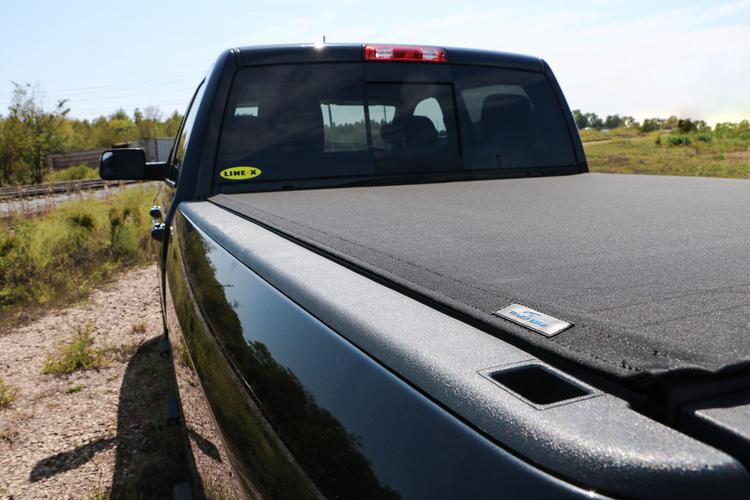Upgrade Your Truck’s Exhaust System
Automotive
March 19, 2008
Chad
Improving sound and performance with a Magnaflow cat-back exhaust system.
Marty’s timing is perfect. He’s first in line on the inside lane—pole position. The way is wide open. He glances to his left to see a modded import. “That tuner’s about to see some truck tail gate,” he says to himself. His pulse goes up a bit as the lights for the cross traffic turn yellow. He watches to make sure the drivers approaching from the left are not running their now-red light. Green lights up, right foot down. The V-8 comes to life with a healthy roar that says, “See ya.”
Marty is right, of course, this is one of the best places in our area to unleash a new exhaust system. The freeway starts here with a traffic light and goes immediately up a straight ramp and over the bridge. Climbing that ramp and getting up to freeway speed produces just what Marty was hoping for—a deep tone that can be felt as well as heard.
Still got stock? Many factory installed exhaust systems not only sound anemic, they actually are because they scrub power. The designers who are given the task of producing these pipes are often handcuffed by several different requirements that add up to one big compromise.
Exhaust engineers are required to build systems that are quiet and that meet certain types of emission standards, but not all of the design concerns are driven by government regulations. Some are based on a perception of what consumers want, which apparently is to listen for the subtle notes of the oboe coming from the sound-system speakers while knowing their gases are being thoroughly scoured by a catalytic converter.
Well, my favorite music style is not so subtle, and I do wonder about emission requirements that are counterproductive to vehicle performance and fuel economy. Because some of the tests are performed on cold engines at idle, they don’t measure how the vehicle operates the majority of the time. Exhaust systems that can pass these tests do not pass the test of moving the vehicle in the most efficient manner possible, which, by the way, requires less fuel.
I’m just guessing (and digressing) here, but it seems like less fuel burned to travel the same distance may also have a positive effect on the amount of particulate matter that enters the atmosphere.
At any rate, the emissions-legal cat-back system we installed on our project Tundra doesn’t create any significant pollution, unless of course you are talking about a little extra volume, which may be considered music to some ears.
A full exhaust install starts with headers right at the engine block exhaust ports (usually replacing an exhaust manifold) and extending all the way back to the tailpipe.
A cat-back system is less invasive. It begins just behind the catalytic converter and replaces everything from there back to the exhaust tips. This is the most common aftermarket vehicle modification.
Because the Magnaflow system we used was designed specifically for this model of truck, the installation was very simple. While we had the opportunity to put the truck up on a rack, this install can also be done from creeper or cardboard.
And, because it’s the exhaust—you might want to let it cool off before you start.
Step 1:
Follow the driveline toward the engine until you see where one of the exhaust pipes crosses below it. The pipe has a connection at that point. Disconnect it and the corresponding connection on the passenger-side pipe.
Step 2:
Find the single clamp near the rear of the muffler and loosen it.

Step 3:
Use a flat screwdriver or small bar to pry the rubber insulators away from the hangers near the front of the muffler.
Step 4:
Work the cat connections back and apart, and then bring the muffler assembly ahead until it’s free from the mid-pipe.
Step 5:
Begin installing the Magnaflow system by re-using the OEM rubber insulator to hold up the rear end of the passenger side outlet pipe while making the connection at the catalytic converter end.
Step 6:
Repeat for the driver’s side pipe.
Step 7:
Find and slide the front muffler clamps into place.
Step 8:
Lift the muffler into position and connect the muffler inlet pipes to the cat pipes.
Step 9:
Slide the front muffler clamps into place and tighten them.
Step 10:
Pre-assemble the mid pipe and tail pipe sections before threading them over the rear axle, but don’t tighten the clamps until everything is fit and lined.
Step 11:
With all the parts connected and lined, go back and check and tighten all of the flange and clamp nuts and bolts.
Enjoy the music!
Side Note
Recommended Articles




